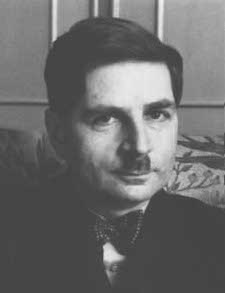
Walter Schottky (1886-1976)
On July 23, 1886, German physicist Walter Hermann Schottky was born. Schottky played a major early role in developing the theory of electron and ion emission phenomena. He invented the screen-grid vacuum tube in 1915 and the pentode in 1919 while working at Siemens, co-invented the ribbon microphone and ribbon loudspeaker in 1924 and later made many significant contributions in the areas of semiconductor devices, technical physics and technology.
Walter Schottky – Youth and Education
Schottky’s father was mathematician Friedrich Hermann Schottky, a professor of mathematics at the University of Zurich, who was known for working on abelian, elliptic, and the theta functions, and also for introducing Schottky’s theorem. The family moved back to Germany in 1892, where his father took up an appointment at the University of Marburg. Schottky graduated from the Steglitz Gymnasium in Berlin in 1904. He completed his B.S. degree in physics, at the University of Berlin in 1908, and he completed his Ph.D. in physics at the Humboldt University of Berlin in 1912, studying under Max Planck and Heinrich Rubens, with a thesis entitled: Zur relativtheoretischen Energetik und Dynamik.[5]
The Ribbon Microphone
Schottky’s postdoctoral period was spent at University of Jena (1912–14). He then lectured at the University of Würzburg (1919–23). He became a professor of theoretical physics at the University of Rostock (1923–27). For two considerable periods of time, Schottky worked as industrial researcher at the Siemens AG Research laboratories first in Berlin and later in Pretzfeld, Bavaria. In 1924, Schottky co-invented the ribbon microphone along with Erwin Gerlach. The idea was that a very fine ribbon suspended in a magnetic field could generate electric signals. This led also to the invention of the ribbon loudspeaker by using it in the reverse order, but it was not practical until high flux permanent magnets became available in the late 1930s
The Schottky Effect
In 1914 Schottky had discovered an irregularity in the emission of thermions in a vacuum tube, now known as the Schottky effect, i.e. an increase in the discharge of electrons from the surface of a heated material by application of an electric field that reduces the value of the energy required for electron emission. The minimum energy required for an electron to escape the surface of some material, called the work function, is supplied by the heat. A very weak electric field may be applied that simply sweeps the already emitted electrons away from the surface of the material. When the field is increased, a point is reached for quite moderate fields at which the value of the work function itself is lowered. If the applied field is further increased, the work function continues to decrease, so that the electron emission current continues to increase. At very high values of the applied field, however, the electron emission undergoes an excessive increase because of the onset of a different type of emission, called high-field emission or, simply, field emission.[2]
The Schottky Defect
Schottky invented the screen-grid tube in 1915, and in 1919 he invented the tetrode, the first multigrid vacuum tube. In his book Thermodynamik (1929), he was one of the first to point out the existence of electron “holes” in the valence-band structure of semiconductors. In 1935 he noticed that a vacancy in a crystal lattice results when an ion from that site is displaced to the crystal’s surface, a type of lattice vacancy now known as the Schottky defect.
Schottky Barrier and Schottky Diode
Furthermore, he discovered a cellular barrier at the interface between metal and semiconductor (the Schottky barrier), which led to development of a hot carrier semiconductor diode (Schottky diode) that exhibits a nonlinear voltage/current relationship.[4] 1943-55 he worked in Pretzfeld (Upper Franconia) in a semiconductor laboratory of the Siemens-Schuckert-Werke, then until 1958 in Erlangen.
Schottky was awarded the Royal Society’s Hughes medal in 1936 for his discovery of the Schrot effect in thermionic emission, i.e. spontaneous current variations in high-vacuum discharge tubes, called by him the “Schrot effect”: literally, the “small shot effect”, and his invention of the screen-grid tetrode and a superheterodyne method of receiving wireless signals. In 1964 he received the Werner von Siemens Ring honoring his ground-breaking work on the physical understanding of many phenomena that led to many important technical appliances, among them tube amplifiers and semiconductors. Walter Schottky died on March 4, .1976 in Forchheim at age 89.
Donald Sadoway, Lec 1 | MIT 3.091SC Introduction to Solid State Chemistry, Fall 2010, [9]
References and Further Reading:
- [1] Walter Schottky, at Famous Scientists
- [2] Schottky Effect, at Britannica Online
- [3] Walter Schottky, German Physicist, at Britannica Online
- [4] Walter Schottky, at NNDB
- [5] Max Planck and the Quantum Theory, SciHi Blog
- [6] Walter Schottky at Wikidata
- [7] Mathis, Wolfgang, “Schottky, Walter” in: Neue Deutsche Biographie 23 (2007), S. 501-502
- [8] Walter Schottky at Mathematics Genealogy
- [9] Donald Sadoway, Lec 1 | MIT 3.091SC Introduction to Solid State Chemistry, Fall 2010, MIT OpenCourseWare @ youtube
- [10] Timeline for Walter H. Schottky, via Wikidata






Pingback: Whewell’s Gazette: Year 3, Vol. #49 | Whewell's Ghost